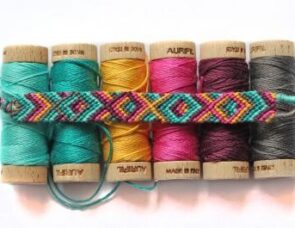A lesson outline exploring the theme of making good and bad choices in response to what happens to us as friends with reference to the story of David and Jonathan.

Introduction
The Bible tells us that David was a person who was dear to God’s heart (Acts 13:22). He understood about the gift of friendship and tried both to make friends and be a friend all his life. Of course, he was also very human and made many mistakes but he knew God wanted him to choose friendship, not hatred. Even when King Saul turned against him after the defeat of Goliath, he tried to stay friends with him. David refused to raise his hand against King Saul, who had chosen to hate David. Once he spared his life, when it would have been very easy to choose the way of violence instead (1 Samuel 24).
We see David’s capacity for friendship best in his relationship with Saul’s son, Jonathan, with whom he made a lifelong pact (a covenant) of commitment (1 Samuel 18:1-3). This was worked out both when Jonathan saved David’s life (1 Samuel 20) and much later when he cared for Jonathan’s crippled son, Mephibosheth, rather than take revenge on Saul’s descendants (2 Samuel 9). David was trying to work out the commandment to love his neighbour as himself (see 1 Samuel 20:17). When David heard of Saul and Jonathan’s deaths in battle, it broke his heart (1 Samuel 31).
From David’s life, the following lesson outline picks up this theme of friendship in the face of hatred, focusing on two incidents in particular.
Preparation
Use an appropriate child-friendly retelling of the Bible story which covers the friendship of David and Jonathan from 1 Samuel 20.1-42.
Development
- How do friends mark their friendship with each other? Is it the exchange of gifts such as friendship rings? The making of promises? Does it involve a special ceremony? Or is it the making of friendship bracelets?
Talk with the class about what it means to mark a friendship.
What makes a best friend and how do friends prove they are friends?
Explain how Jonathan and David became friends, following the killing of giant Goliath. They stayed friends all their life, despite enormous pressures and dangers.
I wonder what colour is friendship.
Use this as an opportunity to make some friendship bands, using the colours the children have chosen.
I wonder what colours God would choose to express friendship with people.
- David ends up on the run from King Saul, Jonathan’s father. He relies on Jonathan for insider information about approaching danger (1 Samuel 20) at a cost. Jonathan almost gets himself killed.Although there was every reason for David to hate the king, when the chance came to kill him, David refused to harm ‘The Lord’s anointed’. (For a drama version of this amusing story that your class could perform see: Psalms-drama from the Psalms.)
- The depth of the friendship between David and Jonathan is shown particularly in David’s eventual reaction to the death of Saul in battle. It would have been extraordinary at the time to show such public remorse at the death of an enemy. Such sadness was the mark of being a true friend and an indication that hatred had been turned to love.
Read what Jesus says about what a Christian’s attitude should be to their enemies (Matthew 5:43-45).
Does the class think that Jesus really meant this?
How can it be possible?
Long before Jesus, David showed that it is possible to choose the way of this kind of friendship.
What lengths do true friends go to to help each other?
Hand out some post-it ‘speech bubbles’ to the group and ask them to fill in the missing word or words in the phrase, ‘Friendship means…’
Compare notes and discuss what they have written.
- For a time of reflection, ask the class to write out the names of all their friends on separate pieces of paper and then arrange these randomly in a circle. Place a candle in the middle. Now ask everyone in the group to choose a name other than the one they have written and call it out, so that all the friends are named in a time of thanksgiving for the gift of friendship.

 Download
Download